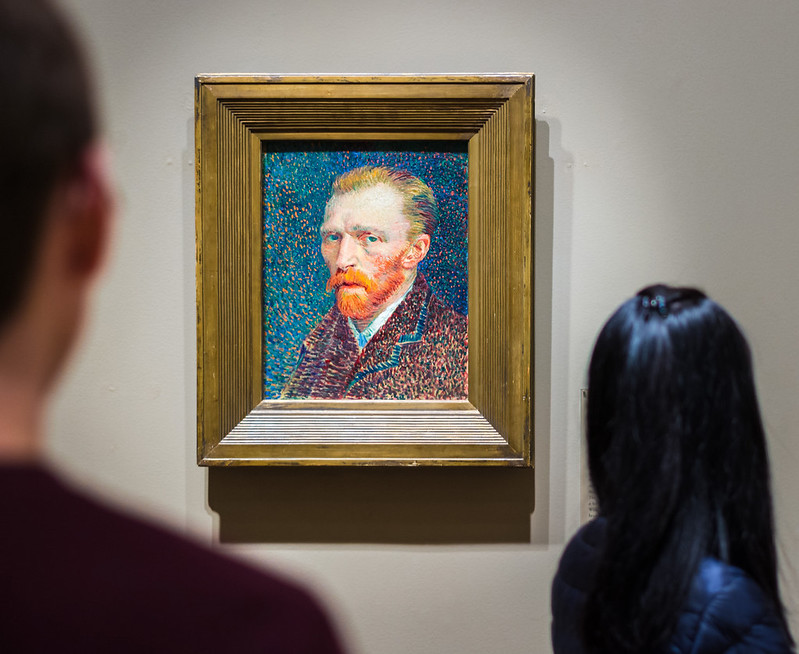
“Self-Portrait” (1887) (Photo: The Art Institute of Chicago via Wikimedia Commons Public Domain)
The work of Vincent van Gogh is among the most recognizable art in the world. Completed in the second half of the 19th century, the Post-Impressionist‘s collection of drawings and paintings illustrates his artistic interests and the evolution of his practice.
While Van Gogh has found a significant amount of fame posthumously, his life was not as untroubled as his characteristically colorful canvases would suggest. From financial struggles to his failing mental health, Van Gogh faced many personal challenges during his career. Eventually, the weight of these problems would lead the artist to take his own life, making his now-beloved body of work particularly poignant.
Today, Van Gogh is known for the distinctive style of his popular paintings. Defined by thick, painterly brushstrokes and a bright color palette, these luminous landscapes, expressive portraits, and lively still lifes have come to represent the artist. However, Van Gogh’s work did not always feature this familiar aesthetic. Instead, it was shaped over time, evolving with each phase of his short life.
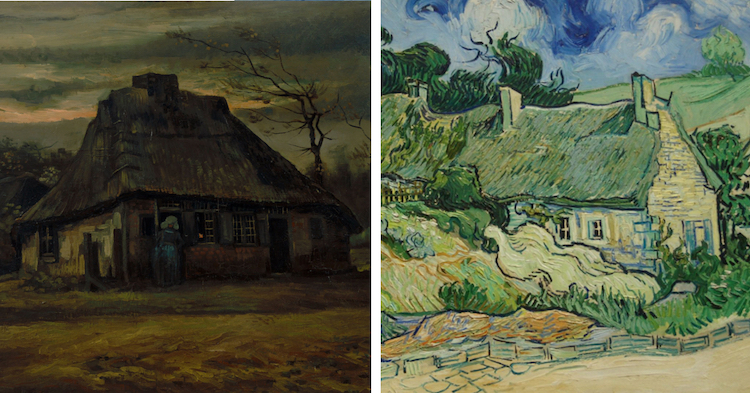
Left: “The Cottage” (1885) (Photo: Google Arts & Culture via Wikimedia Commons Public Domain)
Right: “Thatched Cottages at Cordeville” (1890) (Photo via Wikimedia Commons Public Domain)
Van Gogh’s Evolution
Early Years
Vincent van Gogh was born on March 30, 1853, in Zundert, the Netherlands. While he would occasionally draw as a child, his artistic talent remained largely undiscovered until he decided to pursue painting at 27 years old.
Prior to becoming an artist, Van Gogh explored a number of possible career paths. Having quit school just three years prior, his uncle secured him a job as a clerk at Goupil & Cie, an international art dealer, when he was just 16 years old. A few years later, he was transferred from offices in the Hague to London, where he visited museums regularly and became a lifelong fan of Realist artists like Jean-François Millet.
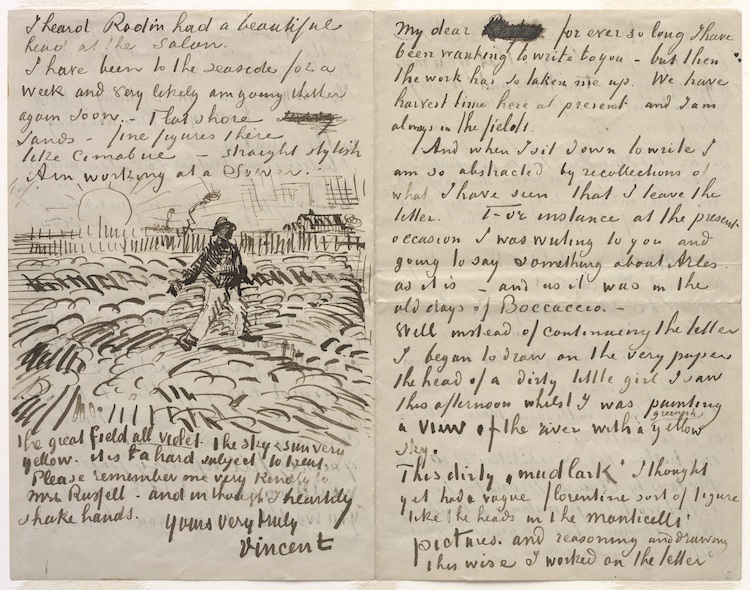
A later letter from Vincent Van Gogh to John Peter Russell showing a figure inspired by Realist artist Millet (1888) (Photo: Solomon R. Guggenheim Foundation via Wikimedia Commons Public Domain)
Young Adulthood
Van Gogh left his job at the firm in 1876. He worked in a school and a bookshop before unsuccessfully studying theology in Amsterdam and working as a lay preacher in Belgium. Following these stints, Van Gogh’s brother, Theo, offered to financially support him so that he could pursue art.
After relocating to the Netherlands, Van Gogh began taking art lessons from artist Anton Mauve. Inspired by Realism, he became a “peasant painter,” producing gritty depictions of life in the countryside. While Theo—now an art dealer in Paris—tried to sell these “peasant paintings,” their dark hues and unpleasant subject matter did not appeal to the French.
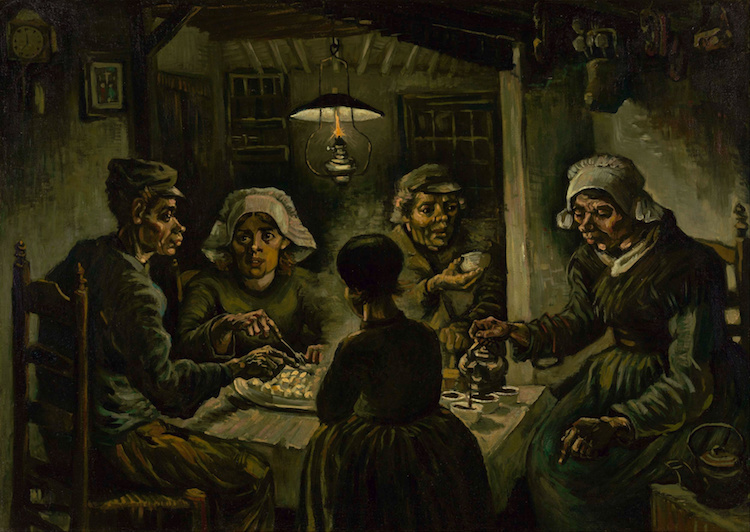
“The Potato Eaters” (1885) (Photo: Google Arts & Culture via Wikimedia Commons Public Domain)
To remedy this, Van Gogh decided to join Theo in Paris, where he would work with artist Fernand Cormon and brighten up his palette.
“Utterly Numbed” in Paris
Exposed to the airy art of Impressionist artists like Claude Monet and introduced to fellow Paris-based painters like Henri de Toulouse-Lautrec, Van Gogh soon adopted a lighter and more colorful approach to painting. It is here that he also developed his signature brushwork.

“View of Paris from Montmartre” (1886) (Photo via Wikimedia Commons Public Domain)
Still, even with this new and modern approach, Van Gogh did not find success in the French capital. “It seems to me almost impossible to be able to work in Paris, unless you have a refuge in which to recover and regain your peace of mind and self-composure,” he wrote to Theo in 1888. “Without that, you’d be bound to get utterly numbed.”
He decided to relocate once again—this time to Arles, an idyllic city in the south of France.
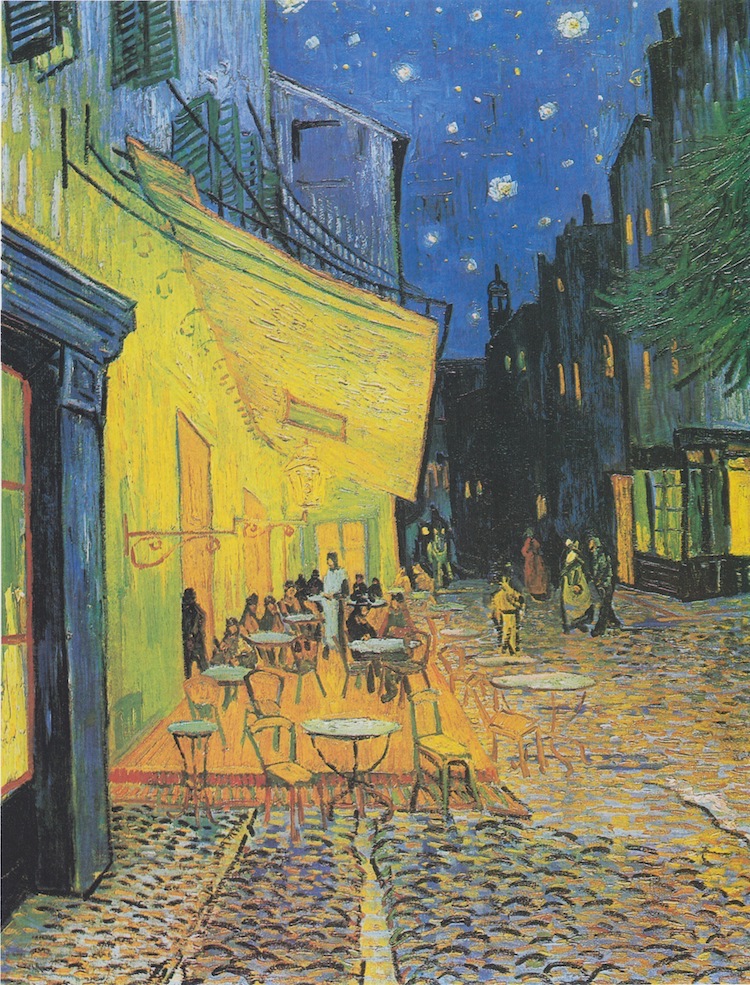
“Café Terrace at Night” (1888) (Photo via Wikimedia Commons Public Domain)
The Yellow House
In Arles, Van Gogh’s paintings became even more colorful and expressive. Surrounded by beautiful scenery and bathed in the sun, Arles seemed like an artist’s paradise to Van Gogh. Thus, he dreamt up the idea of a shared studio where he and his contemporaries could paint and rented several rooms in the “Yellow House” to serve this purpose.

“The Yellow House” (1888) (Photo: Google Arts & Culture via Wikimedia Commons Public Domain)
Fellow Post-Impressionist artist Paul Gauguin joined Van Gogh in the Yellow House, intending to collaborate. However, their working relationship was short-lived. After a string of disagreements, Gauguin decided to move out, prompting the increasingly mentally unstable Van Gogh to cut off part of his own ear with a knife.
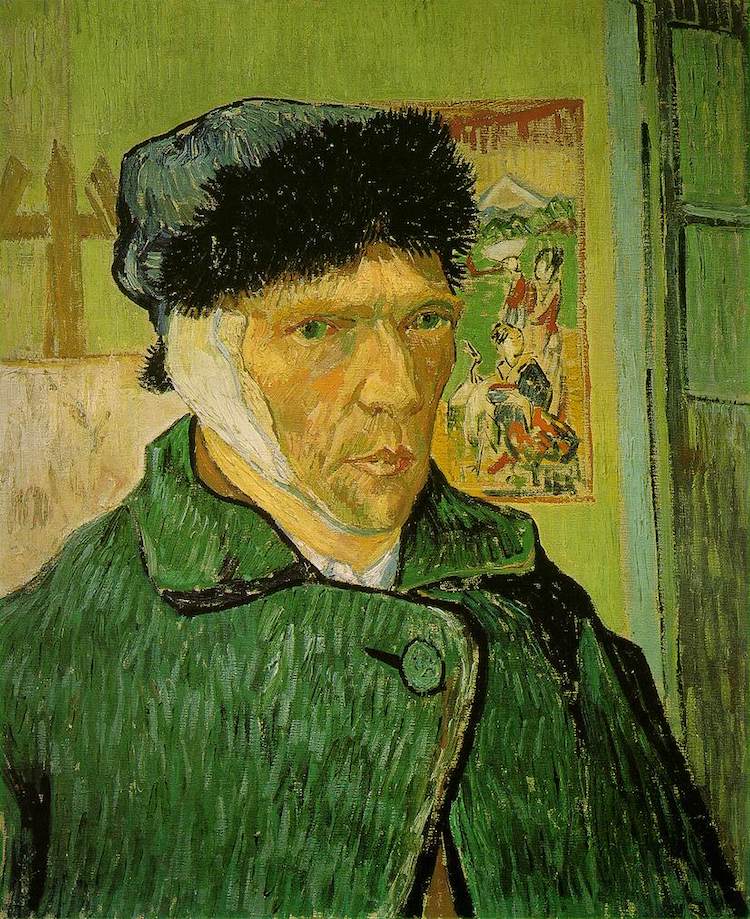
“Self-Portrait with Bandaged Ear” (1889) (Photo: WebMuseum via Wikimedia Commons Public Domain)
Hospitalization
Van Gogh was admitted to a hospital in Arles the next morning. While he was discharged just a few days later, he recognized the state of his mental health and eventually checked himself into a mental health facility in the nearby Saint-Rémy-de-Provence commune.
While committed, he resumed his artistic practice, acquiring an extra room as an artist’s studio and producing 150 paintings. Eventually, these pieces would be compiled into the Saint-Paul Asylum, Saint-Rémy series, which features important works like Self-Portrait with a Bandaged Ear and The Starry Night, a nocturnal landscape painted through his “iron-barred window.”

“The Starry Night” (1889) (Photo: Google Arts & Culture via Wikimedia Commons Public Domain)
Ironically, it was during Van Gogh’s hospitalization that his work began receiving some recognition: six of his paintings were exhibited in Belgium, and 10 in Paris. “Your paintings are well placed and look very well,” Theo told Vincent about his work in Paris. “Many people came up to ask me to give you their compliments. Gauguin said that your paintings are the key to the exhibition.”
Shortly after this success, Van Gogh left the hospital and moved to Auvers-sur-Oise, a suburb of Paris.
Final Days
During the last two months of his life, Van Gogh stayed at the Auberge Ravoux, an inn in Auvers-sur-Oise, where he produced over 80 paintings and 60 sketches. Though he seemed to be making strides as a painter, he remained plagued with financial woes, which undoubtedly contributed to his unsteady mental state.
On July 27, 1890, Van Gogh shot himself in a wheat field—the setting of his haunting final painting. He died two days later.
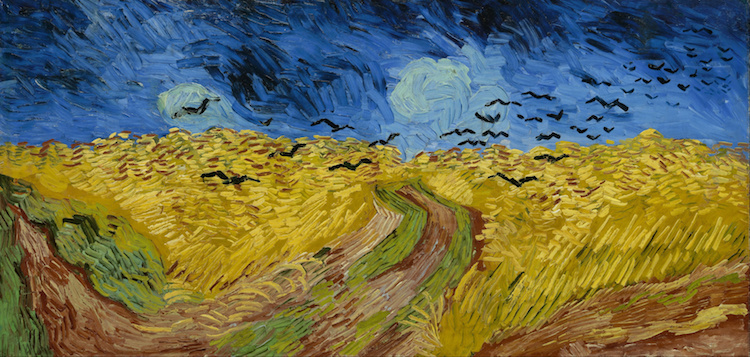
“Wheatfield with Crows” (1890) (Photo: Google Arts & Culture via Wikimedia Commons Public Domain)
Legacy
A few decades after his death, Van Gogh’s 850 paintings and 1,300 drawings reached international acclaim. Today, he remains one of the most important figures in the entire history of art, celebrated for both his artistic practice and his admirable approach to life.
“If only we try to live sincerely,” he told Theo in 1878, “it will go well with us, even though we are certain to experience real sorrow, and great disappointments, and also will probably commit great faults and do wrong things, but it certainly is true, that it is better to be high-spirited, even though one makes more mistakes, than to be narrow-minded and all too prudent. It is good to love many things, for therein lies the true strength, and whosoever loves much performs much, and can accomplish much, and what is done in love, is well done.”
Related Articles:
The Evolution of Picasso’s Painting Style and What Each Artistic Choice Represents
How Female Painter Mary Cassatt Became an Important Impressionist Figure
Why Post-Impressionist Painter Paul Cézanne Is Known as the “Father of Modern Art”
Van Gogh Museum Puts Nearly 1,000 Paintings and Drawings Online
Cute and Quirky Van Gogh Action Figure Comes with Tiny Detachable Ear

